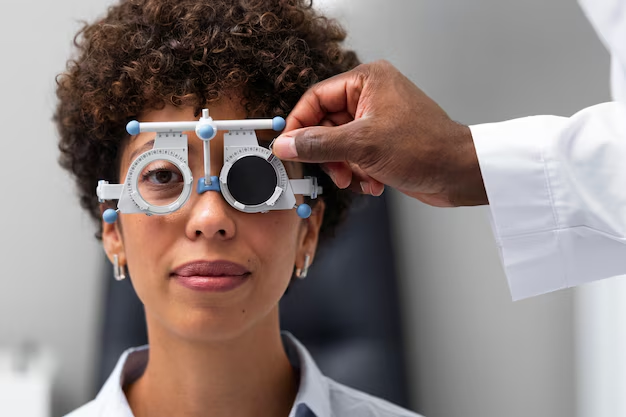Understanding Vision Changes: What Do Cataracts Look Like?
Seeing the world is a precious gift that most of us can easily take for granted until something interferes with that ability. Cataracts are one of those common interferences that affect vision in various nuanced ways. Whether you or a loved one suspect cataracts, understanding what they look like — not only physically, but symptomatically — is the first step to addressing their impact on your life. This comprehensive guide explores what cataracts look like both from an internal and external perspective, demystifying how they affect vision and what steps you might consider next.
🧐 Identifying Cataract Symptoms
Cataracts might not be visibly apparent just by looking at someone since they develop inside the eye. However, there are distinctive symptoms that signal their presence:
Clouded or Blurred Vision: Early on, cataracts might cause vision to become blurry, resembling looking through a cloudy or fogged-up lens. This is often one of the earliest signs of cataract development.
Increased Sensitivity to Light: Individuals with cataracts frequently report discomfort in bright lighting and glare from headlights while driving at night.
Halos Around Lights: You might notice halos or rings around lights. This symptom can be particularly noticeable in low-light settings.
Fading or Yellowing of Colors: Colors may start to appear less vibrant or take on a yellow or brownish hue, altering your perception of them.
Double Vision in a Single Eye: Known as monocular double vision, you might see double images in the affected eye.
While these symptoms do not confirm the presence of cataracts on their own, they do warrant a professional eye examination.
🌈 How Cataracts Affect Vision
Cataracts alter vision in a manner that seems subtle initially but can grow progressively worse without intervention. This change occurs because cataracts develop when the lens in your eye becomes cloudy, scattering incoming light and preventing the retina from receiving clear images.
1. Types of Cataracts and Their Visual Effects
There are several types of cataracts, each potentially affecting vision distinctly:
Nuclear Cataracts: These develop in the center of the lens, often leading to a temporary improvement in near vision before it progressively declines (a condition known as second sight).
Cortical Cataracts: Notable for starting at the lens edges and gradually extending inward. Vision may become scattered with white spokes and difficulty with peripheral vision.
Posterior Subcapsular Cataracts: These affect the back of the lens, making reading difficult, increasing glare sensitivity, and affecting vision in bright light.
Each type might manifest differently, but typically encompasses the broader symptoms mentioned above.
👓 Inside the Eye: The Anatomy of Cataracts
Understanding the anatomy of the eye can shed light on why cataracts affect vision. The lens, located behind the iris and pupil, focuses light onto the retina. When proteins in the lens begin to clump, this clarity decreases, leading to the foggy vision symptomatic of cataracts.
🔍 How Are Cataracts Diagnosed?
An eye doctor diagnoses cataracts through a comprehensive ophthalmic exam. This might include:
Visual Acuity Test: Assessing clarity of vision at distance.
Slit-Lamp Examination: Provides a magnified view of eye structures, detecting any abnormalities.
Retinal Exam: Allows the doctor to see the back of your eye, using eye drops to dilate your pupils.
These assessments help determine the type and severity of cataracts, informing treatment decisions.
🏥 Cataract Prevention and Management
While cataracts are often a consequence of aging, there are ways to manage and potentially slow their progression:
Regular Eye Exams: Early detection through regular exams can address vision changes promptly.
Healthy Lifestyle: Diet rich in antioxidants, wearing sunglasses to protect your eyes, and quitting smoking can influence cataract development.
Managing Health Conditions: Conditions like diabetes, when managed, might reduce cataract risk.
Tip: Keep a symptom journal to note changes in vision and share with your healthcare provider.
📅 Considering Cataract Surgery
For many, cataract surgery becomes a beneficial option, especially when cataracts begin to significantly affect daily life. This procedure involves replacing the clouded lens with a clear artificial lens. While common and typically safe, any surgical option should be discussed thoroughly with a healthcare professional, considering factors like recovery time and visual expectations post-surgery.
🕵️♂️ Key Takeaways
Here’s a concise summary highlighting the main takeaways about cataracts:
- Symptoms: Cloudy vision, light sensitivity, halos, faded colors, and double vision.
- Types: Nuclear (central lens), cortical (lens edges), and posterior subcapsular (back of lens).
- Diagnosis: Eye exams including visual acuity tests and retinal examinations.
- Prevention: Healthy lifestyle, regular eye exams, and health management.
- Treatment: Cataract surgery if significant vision impact occurs.
🎯 Final Insight: Your Vision Pathway
Understanding cataracts involves recognizing both their visual and symptomatic impacts. While cataracts are a common part of aging, awareness and regular eye care can mitigate their effects. If you suspect cataracts, seeking professional advice and regular monitoring are invaluable. This journey starts with knowing the signs and taking proactive steps towards better eye health. Empower yourself with knowledge and take charge of your vision today.
